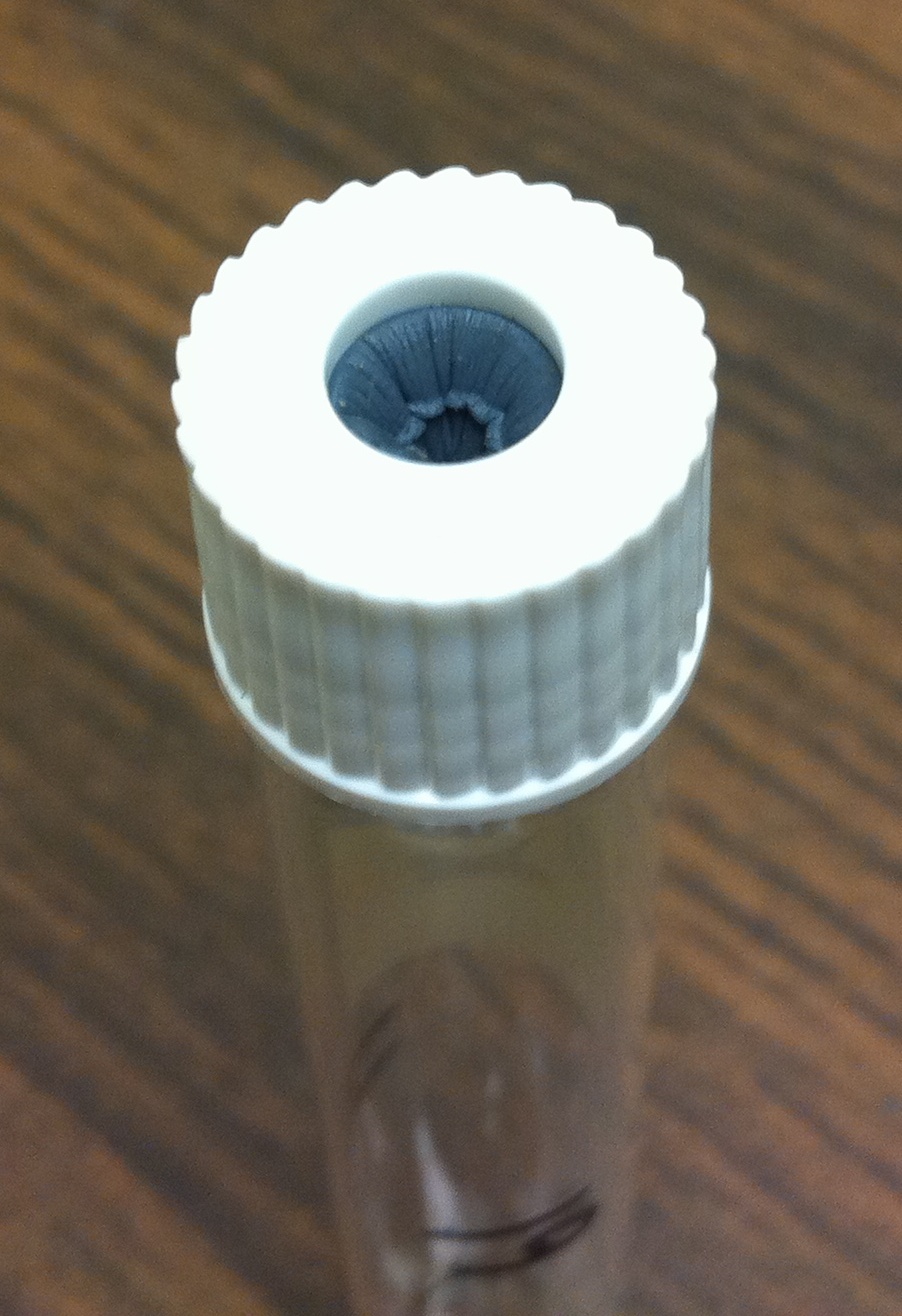Tips for Dissolved Inorganic Carbon (DIC) in Water by GasBench-IRMS
 1) Avoid over-tightening Exetainer caps. Vials will leak when caps are over-tightened, causing the septa to pucker and pull away from the vial. Turn caps until snug, but not so far that the septa start to pucker.
1) Avoid over-tightening Exetainer caps. Vials will leak when caps are over-tightened, causing the septa to pucker and pull away from the vial. Turn caps until snug, but not so far that the septa start to pucker.
2) Do not apply silicone grease, adhesives, or sealant to the tops of the vials. These materials clog the autosampler needle. The process of removing these sealants increases the risk of losing your gas sample due to dislodged septum.
3) Avoid thick labels (e.g. wrapped tape) or stacks of labels (e.g. new labels over old labels), as these will have top be removed for the samples to fit into our autosampler trays.
Shipping
Carefully package small groups of Exetainers in Ziplock bags, small boxes, or their original boxes with dividers to prevent glass-on-glass impact. Then package these sets in a larger sturdy box with Styrofoam peanuts or bubble wrap. Make sure the samples are well cushioned on all sides; loose vials can break during shipping. Coolers will not be returned.
Ship refrigerated (not frozen) water samples in hard-walled coolers or Styrofoam insulated shipping kits. Do not use foam-only coolers or cardboard-only boxes for the exterior shipping container; these containers will disintegrate due to condensation and hard impacts when tossed by couriers. Keep the entire shipment in refrigeration until time to ship. Fill any remaining “air space” in the cooler with newspaper or other filler, this assists with insulating your samples, and protects your container(s) when the couriers toss your shipment. Ship your samples overnight or 1-day express to arrive at the SIF on a Tuesday – Thursday to avoid delays with refrigeration. Blue ice blocks, cold packs, or ice blankets should be used to extend refrigeration, but each block should be wrapped with bubble wrap, as the frozen blocks can damage glass vials in the event of impact.
Please complete and submit the online Analysis Order Form and Sample List for your samples. Also, be sure to include a printed copy with your samples. The SIF uses this form to track your samples and to contact you regarding receipt of samples, data, and invoicing. For mixed analysis requests, we require completing a separate form for each type of analysis.